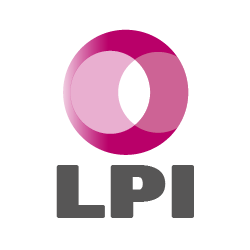LPI Fellow and consultant Myles Runham writes:
The learning and development industry fascinates in many ways. Many years in and I still wonder how it can seem so established and yet immature at the same time. (Not that we are behaving immaturely, rather that our industry bares few of the hallmarks we might expect of maturity). In large part, this is because it is very hard to define. That L word is devilishly elusive. (Although, almost universally, what we do is training of some kind). Most challenging, is that our customers, the people who do the learning, do it all the time without resort to any products or services at all. A tough gig.
Equally, there are not many barriers to entry in L&D. The business is wide open to new entrants. Anyone can do it, pretty much. Anyone can set themselves up as a trainer. It has never been easier to share expertise and experience. We can do it at a global scale via a blog, YouTube, TikTok etc. It has never been easier to make money as a trainer/tutor/teacher/whatever on the burgeoning number of course creation platforms. It is instructive that course creation as a rapidly growing segment of the consumer learning market has arrived from the outside. Content creators have realised a value in content that the industry shares amongst ourselves largely for free. Are we missing a trick here?
The LPI and CIPD provide excellent guides to what professionals should expect of each other in terms of skills and knowledge. They also work hard to support that knowledge and skills development to keep pace with the market. These benchmarks of professional capability are important. Whilst anyone can be a trainer, a recognised signal of one’s level of ability is useful. How far these signals penetrate beyond the L&D department is hard to know. The fact that few of the new wave of course creators carry these qualifications may be a part of the answer.
So what’s stopping you?
Direct access to people wanting to learn removes the need to be part of an organisation to reach customers. Freelance training, a time honoured career, has been boosted by digital disintermediation. The switching off of face to face delivery in March of 2020 delivered a shock to many and upended common practice. Further up the food chain, the last few years have shown a seemingly endless growth of businesses arriving in the L&D technology sector. COVID is, again, the boost here, demonstrating that absence from the classroom does not necessarily remove access to instruction. Launching and growing a good business is hard work, as it has always been, but barriers are low to accessing the market.
Legal and regulatory barriers are very low. They exist in education where licensing and legal obligations are significant, rather than L&D where there is regulation is of little concern. Similarly, there are few standards to overcome before vendors can develop code or offer services. Where standards do exist, such as SCORM and xAPI, they are open and available. They are also open to negotiation between customer and vendor. This flexibility is attractive, but does result in variable application. I am a supporter of the value of standards and find it interesting that incumbents in the industry have done so little to protect their investments from new entrants in this way. There is scope here for cooperation and collaboration between vendors and customers. A smoother path to innovation could be created.
There are important start up costs for L&D businesses. These do not appear to be high hurdles, though, compared with other industries. Technology development does take time and resource, but it also becomes easier as cloud services and coding automation develop. There does not seem to be an IP barrier if the drum beat of LXP launches is an indicator. Or, at least, not one that is defended by use of patents. Some of the more recent arrivals with deep expertise in AI are exceptions here, having spent many years in R&D to prove their technology. Obrizum is a good example of a provider with long technology roots.
Nobody said it would be easy
Perhaps more onerous is the cost of good sales people to support growth, often a first step following investment, along with marketing. This is not unusual for business to business services and does not single out L&D as unusual, however.
At the top right of the Fosway 9 Grid, there are some important barriers to success, if not to entry. Handling the scale and complexity of global business with multiple product lines and divisions, across many national markets and languages requires genuinely heavy lifting. Hence the size and scarcity of players in that area of the grid. These are not start ups, however. The challenge is for newer entrants developing platform scale and flexibility to take on those big client agreements. This is where investors appear to be seeking their exits, with acquirers adding a richer feature set to their existing offers.
Brand loyalty is often cited as a challenge for fresh competitors. Shifting customers to unknown providers can be problematic. The signals for L&D are unclear to my reading here. Loyalty is most often won from great service and strong relationships. Price does matter though and can overcome that – an advantage for LXP type platforms where shorter contracts and lower rates are a proven tactic. But is that real loyalty?
Switching costs are the real challenge for winning business from incumbents. This may not qualify as loyalty as much as inertia, but it is important. It is also a symptom of poor interoperability standards. Despite the prevalence of ecosystems as an idea, the reality of making them work is some way from organic. Customers face effort and investment to make products play nice together, and the industry is poorer for it.
Perhaps the hardest to fathom is the low quality barrier for L&D. Not that customers have low standards (do they?), rather that quality is so poorly defined. It is very much the customer that needs to seek out reliable signals of quality against opaque and variable descriptors. This does not suggest that low quality work abounds. There is plenty of talent and experience in the market on provider and client sides. Against what that quality is measured is pretty muddled though. Volume – yes. Completions – yes. Satisfaction – yes. But effectiveness, efficiency and yield are rarely described publicly. How long can we hide behind claims of the uniqueness of every organisation and programme? Media and advertising, for example, overcame this hurdle some decades ago and apply common behaviour measures across a wide range of sectors, campaigns and brands.
For me, the most attractive feature of L&D as an industry is the willingness of people in it to discuss, debate and explore together. There is such a rich seam of expertise available to practitioners simply because of the belief that this high tide of sharing raises all vessels. It is curious, against that backdrop, that businesses and organisations do not come together as readily to solve our common problems. Raising some of those barriers could be a signal of growing maturity and an indication to external stakeholders that we are confident of our value.
About the author – Myles Runham:
Myles is an experienced senior leader in both learning services and digital business, having worked in around the internet for 20 years. He has a track record for strategy development and delivery in a variety of digital services, taking ideas from inception, through business case and into launch and operational management.
A deep understanding of digital business and product management is coupled with extensive practical knowledge of managing and leading learning teams across technology, content, product and design functions. This is evidenced in both strategic and practical advice on how to adopt user experience thinking, agile development and product development techniques for learning and development teams, bringing digital thinking to life for senior stakeholders and teams on the ground.
His experience combines more recent leadership roles in learning and learning technology with managerial roles across a variety of disciplines. This history includes roles as the Head of Digital for the BBC Academy, Managing Director of Ask.com Europe (AKA Ask Jeeves) and Head of Interactive Learning for BBC education services, across television, radio and online content and products.
Myles is an LPI consultant – click here to find out more
Thanks to https://www.geograph.org.uk/photo/63016 for the cover image.










Leave A Comment